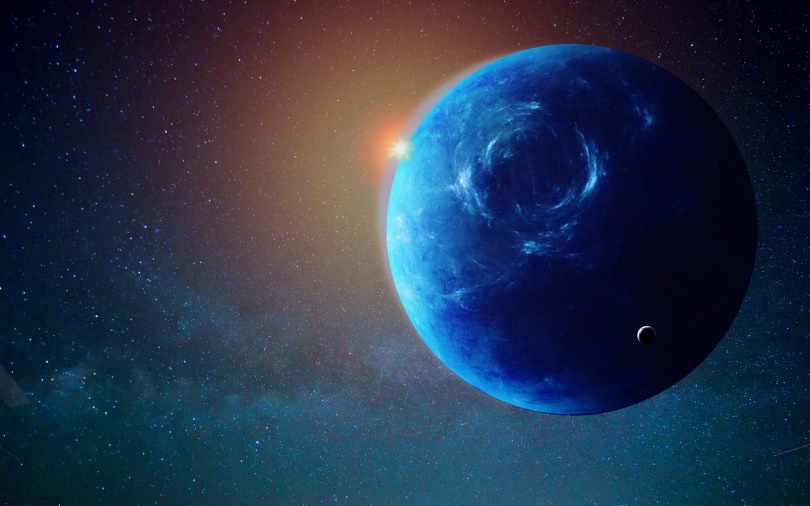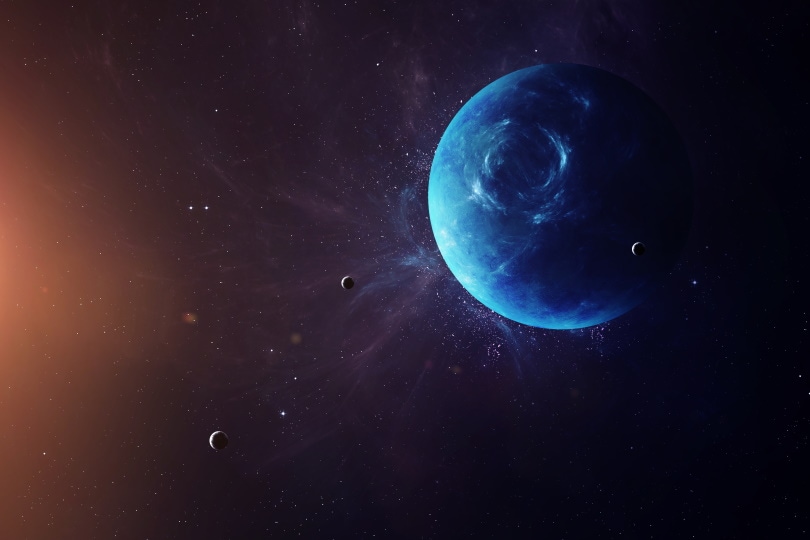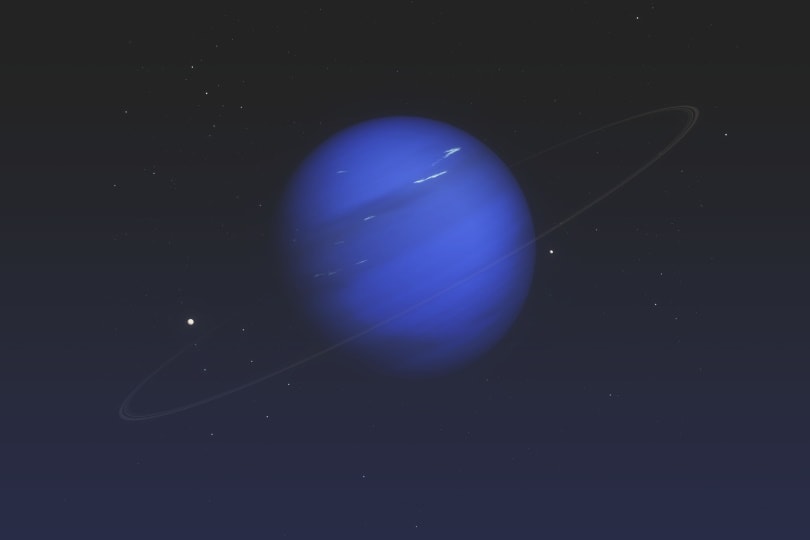How Far Is Neptune From the Sun?
Last Updated on

Whether you’re trying to spot Neptune in the sky or are curious about how far the outer planets really are, you’ve come to the right place.
We break down everything that you need to know and do our best to give you a few comparisons that will help you comprehend the vast distances of our solar system.

Distance From Neptune to the Sun

Like all planets in the Solar System, Neptune has an elliptical orbit. What that means is that at some points throughout its orbit, it’s closer to the Sun than at others.
So, while the average distance to Neptune from the Sun is 2.79 billion miles, that’s not the farthest the planet can go. That point is 2.83 billion miles away when it’s at aphelion. At perihelion, when it’s closest to the Sun, that number shrinks to 2.77 billion miles.
While that’s not a huge change when we’re talking about distances that big, it’s still a 60-million-mile difference.
For comparison, Earth averages about 93 million miles from the Sun, which means that Neptune is about 30 times farther from the Sun than Earth!
How Long Does It Take Sunlight to Reach Neptune?

While light travels fast, it’s not instantaneous. In fact, at Neptune’s average distance from the Sun, it takes 4 hours and 10 minutes for the light to reach Neptune!
When Neptune is at aphelion, that time grows to 4 hours and 13.5 minutes, and when the planet is at perihelion, that number shrinks to 4 hours and 8 minutes. For reference, it takes light roughly 8 minutes and 20 seconds to reach Earth.

Final Points
With such large distances in space, it’s no wonder that Neptune is so cold. But keep in mind that while Neptune is about 30 AU from the Sun, the next closest star is over 271,937 AUs away.
Needless to say, space is vast, but that doesn’t mean you should stop asking questions. So, keep stargazing, and the next time that you have a question that you just can’t answer, come check us out!
You might also be interested in:
- 5 Best Telescopes for Astrophotography – Reviews & Top Picks
- 17 Different Types of Telescopes & Their Uses (with Pictures)
Featured Image Credit: ParallelVision, Pixabay
About the Author Robert Sparks
Robert’s obsession with all things optical started early in life, when his optician father would bring home prototypes for Robert to play with. Nowadays, Robert is dedicated to helping others find the right optics for their needs. His hobbies include astronomy, astrophysics, and model building. Originally from Newark, NJ, he resides in Santa Fe, New Mexico, where the nighttime skies are filled with glittering stars.
Related Articles:
How to Clean a Refractor Telescope: Step-by-Step Guide
How to Clean a Telescope Eyepiece: Step-by-Step Guide
How to Clean a Rifle Scope: 8 Expert Tips
Monocular vs Telescope: Differences Explained (With Pictures)
What Is a Monocular Used For? 8 Common Functions
How to Clean a Telescope Mirror: 8 Expert Tips
Brightfield vs Phase Contrast Microscopy: The Differences Explained
SkyCamHD Drone Review: Pros, Cons, FAQ, & Verdict
